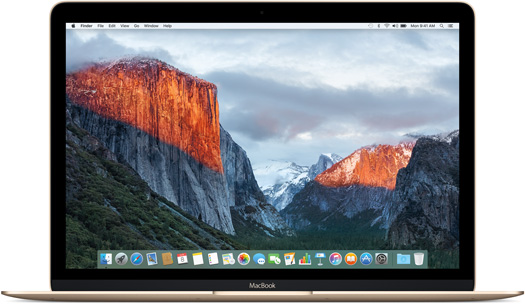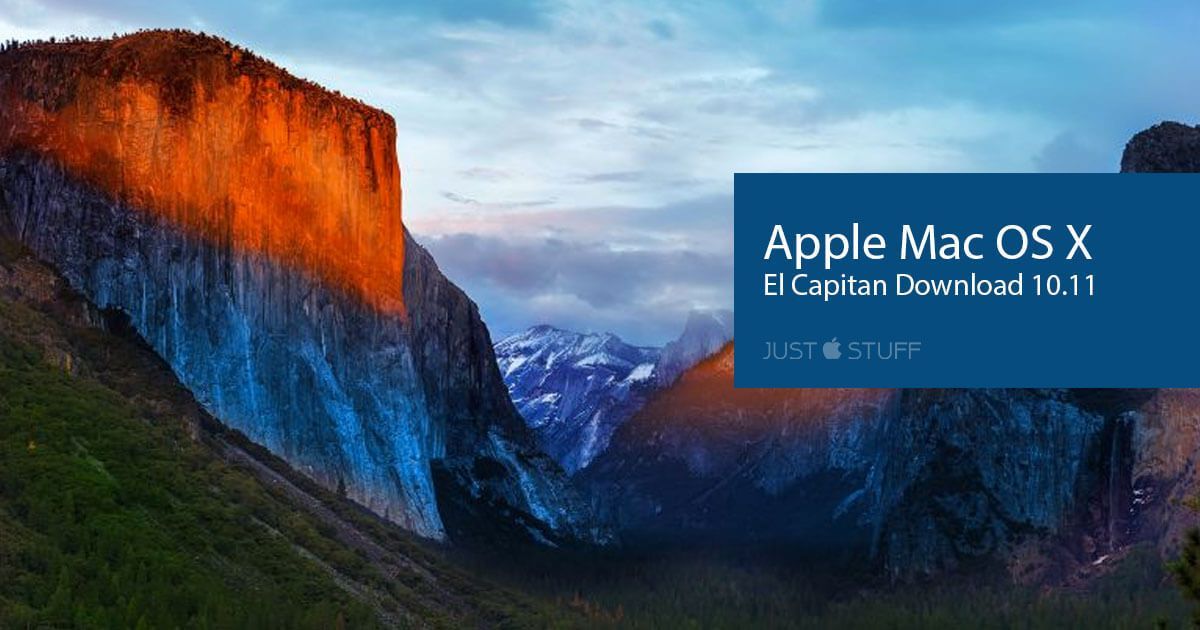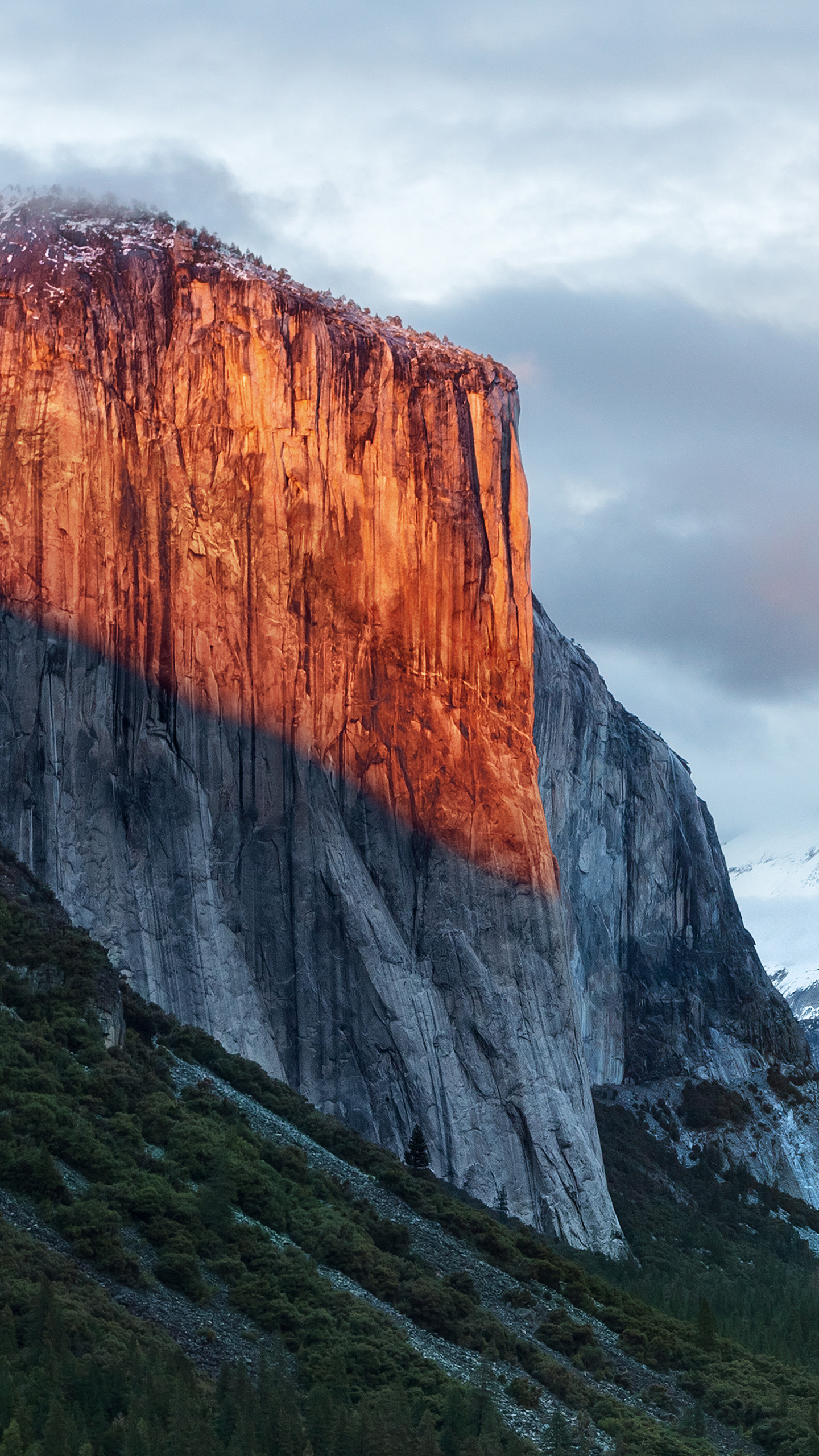ONLY users that previously downloaded these 2 OS X releases when they were the current OS X release, will be able to download them again. All other users can only download the latest OS X release (El Capitan), or pay $20 (US) for Lion or Mountain Lion (unless of course they were previously purchased or came with that release directly from the. If you’re still running OS X 10.8 Mountain Lion, or earlier, our recommendation is to upgrade to El Capitan. Apple usually supports the newest OS X, as well as the two previous versions, so with 10.11, support for 10.8 is likely to be dropped. OS X El Capitan (10.11) on Unsupported Macs macOS Extractor and MacPostFactor are apps that guide you through patching and installing OS X El Capitan (10.11), Yosemite (10.10), Mavericks (10.9), or Mountain Lion (10.8) on your older Mac. Whilst it does lessen security somewhat, it is not the end of the world, and OS versions prior to El Capitan.
WARNING: If you have updated boot.efi on a MacPro1,1 or MacPro2,1 so you can run Mac OS X 10.11 El Capitan, DO NOT INSTALL SECURITY UPDATE 2018-001. According to Greg Hrutkay of Hrutkay Mods (see warning video), it breaks boot.efi on the 2006 and 2007 Mac Pros that have been thus updated.
With OS X 10.11 El Capitan, Apple continues its annual march to newer, better, more powerful versions of Mac OS X. Best of all, El Capitan runs on the same Macs that support OS X 10.8 Mountain Lion, 10.9 Mavericks, or 10.10 Yosemite.
Let’s take a look at what’s new!
More Speed
Apple claims El Capitan does nearly everything faster than earlier versions of OS X, with apps launching up to 40% faster, app switching twice as fast, and Preview displaying a PDF four times as fast.
On the gaming front, there’s Metal, a core graphics technology that gives programmers better access to a graphics card’s capabilities. Apple claims draw calls are up to 10x faster than in Yosemite, and also that web pages will render 40% faster.
Ars Technica has compared Metal with OpenGL and found decidedly mixed results that are very dependent on your graphics hardware. Each renders some things better than the other.
Split View
Ever since System 7, Macs have been able to run more than one program at a time. And even on the itty bitty 9″ 512 x 342 pixel displays of those compact early Macs, it was possible to view open windows from two or more apps at the same time. But it was up to you to arrange those windows.
With Split View, OS X finally gets a feature that’s been available through third-party apps for years: Automatically splitting the window to display two apps side-by-side on today’s much larger displays. (iOS 9 brings the same capability to iPads.)
As someone who is almost always working with two or more apps, this could become a very useful feature. Unfortunately, my only Mac capable of running El Capitan is a 13″ Late 2008 Aluminum MacBook, and its 1280 x 800 display already feels cramped. But with an external display, things will be much better.
Find Your Cursor
The bigger the display, the harder it can be to find your cursor. With El Capitan, jiggle your finger on the trackpad or jiggle your mouse, and it gets bigger – and easier to find.
Apple has been tinkering with Mail forever, sometimes ruining the app, sometimes bringing back ease-of-use lost over the “upgrade” cycle. Word on the street is that Mail in El Capitan finally gets things right again. I can’t say; I don’t use it.

I gave up on the OS X Mail app years ago. I’ve been using Postbox for a while now, and I love it. Postbox is a commercial email client based on Mozilla Thunderbird. I’m more than happy to use an email program that works consistently on my various Macs, although I have not yet upgraded from version 3. Version 4 still supports OS X 10.6 Snow Leopard and later on Macs capable of running 64-bit software.
Notes
If you haven’t already discovered Evernote, you might find the updated Notes app a big step forward. It finally lets you edit notes and sync them between OS X and iOS devices.
Or you can use the free Evernote app, which is available for OS X, iOS, Android, and Windows. If you need more space than for base membership supports, you can upgrade to Evernote Plus or Evernote Premium for a fee. The free version works for me.

Then again, Notes is a completely new app now. It can handle PDFs, photos, web links, map locations, create checklists, and much more, and it will sync them between OS X El Capitan and iOS 9 devices – only.
Mission Control
Apple has updated Mission Control, which has been part of OS X since 10.8 Mountain Lion. Mission Control makes it easy to find an application window by displaying thumbnails of all open windows on your display and letting you click on the one you want.
Mission Control is a feature I will admit to never having used.
Spotlight
Spotlight has been around since OS X 10.4 Tiger, and El Capitan takes it to the next level. Where Spotlight started out as a way to collect information on any file on your hard drive(s), it now goes beyond your Mac. You can do natural language searches – and search sources on the Internet.
I’ve never found Spotlight very useful. I almost always search by file name, so all those extra search capabilities in Spotlight are lost on me.
Live Photos
Apple’s new Live Photos image format is a cross between the traditional still photo and a video. When you use Live Photo for your shots, your iPhone 6S or 6S Plus records 1.5 seconds before and after you touch the shutter button, sound included. Only the iPhone 6 and 6S support Live Photos – plus any Mac capable of running OS X 10.11 El Capitan and it Photos app.
Here’s hoping Apple supports image editing for Live Photos – it’s a sure thing no existing app supports them yet. Facebook plans to support Live Photos on its iOS app by the end of the year.
Safari
Yeah, yeah, another iteration of Apple’s own web browser. You can now pin your favorite sites and turn off the volume in a tab without having to open it.
Maps

Probably not as big a deal on your Mac as on an iPhone or iPad, OS X Maps is keeping up with features on the iOS versions, including mass transit. And if your iDevice is running iOS 9, you can send your route to it.
San Francisco: Putting a New (Type) Face on OS X
One distinctive thing that immediately set the Macintosh apart from other personal computers was its use of fonts, including the system font used for the menu bar and pull-down menus. In the earliest versions of the Mac OS and up to Mac OS 7.6, the system font was Chicago.
With the introduction of Mac OS 8 and its Platinum interface, Charcoal was introduced as the new system font. It’s not very different from Chicago, and we’ve been using it on our header graphic for years.
El Capitan Os X Update
Apple made a lot of changes with the introduction of Mac OS X, and using Lucida Grande as the system font was one of them. Lucida Grande remained the system font through OS X 10.9 Mavericks.
With OS X 10.10 Yosemite, Apple moved to Helvetica Neue as its system font, the same typeface use on iPhones and iPads starting with iOS 7. And now it’s changed the system font once again, adopting the San Francisco font developed for Apple Watch.
Other Fonts
In addition to San Francisco, Apple has a new Chinese font, PingFang, “with thousands of redesigned characters and six new line weights”, as well as four new Japanese fonts. Apple has also improved trackpad input for Chinese.
Keywords: #osxelcapitan #elcapitan
Short link: http://goo.gl/up7xF3
searchword: osxelcapitan
Related
For the first time since Apple released OS X 10.8 Mountain Lion in July 2012, Apple has dropped support for a number of older Macs that had supported OS X 10.8 through 10.11 El Capitan. No MacBook and iMac models prior to Late 2009 and no MacBook Air, MacBook Pro, Mac mini, and Mac Pro models prior. OS X El Capitan (10.11) on Unsupported Macs macOS Extractor and MacPostFactor are apps that guide you through patching and installing OS X El Capitan (10.11), Yosemite (10.10), Mavericks (10.9), or Mountain Lion (10.8) on your older Mac. Whilst it does lessen security somewhat, it is not the end of the world, and OS versions prior to El Capitan do not include it anyway. Related tutorial: How to disable System Integrity Protection 7) Once everything is ready, launch the macOS Sierra Patcher application. Question: I read somewhere that it is possible to install the latest version of OSX 10.10 Yosemite on my Mac, even though the official installer refuses to install. Can you give me any directions? Answer: Installing newer versions of OSX on slightly older Macs that do not meet the official system requirements. I am currently researching installing OS X 10.13 High Sierra on unsupported Macs. I did the Sierra upgrade on a couple of MacPros 4,1 and it has worked excellently, after I did a firmware update patch to get it to read as a MacPro 5,1, so I am very optimistic on doing it again.
For the first time since Apple released OS X 10.8 Mountain Lion in July 2012, Apple has dropped support for a number of older Macs that had supported OS X 10.8 through 10.11 El Capitan. No MacBook and iMac models prior to Late 2009 and no MacBook Air, MacBook Pro, Mac mini, and Mac Pro models prior to 2010 are officially supported by macOS Sierra, although workarounds have been developed for most unsupported 2008 and 2009 Macs.
Mac OS X is no longer being called OS X, and Apple is not promoting Sierra with a version number either (however, it is internally identified as OS X 10.12). Now it’s simply macOS Sierra – in keeping with iOS, tvOS, and watchOS.
macOS Sierra was released on Sept. 20, 2016 and officially requires a supported Mac with at least 2 GB of system memory and 8.8 GB of available storage space. (We recommend at least 4 GB of RAM.)
Officially Supported Macs
All Late 2009 and later MacBook and iMac models are supported in macOS Sierra, as are all 2010 and newer MacBook Air, MacBook Pro, Mac mini, and Mac Pro computers.
Hacking macOS Sierra for Unsupported Macs
Hardware requirements for macOS Sierre include a CPU with SSE4.1, so it cannot be run on any Mac with a CPU prior to the Penryn Core 2 Duo. In theory, it should be possible to get Sierra running on any Penryn or later Mac. It may be possible to swap out the Merom CPU in some Macs for a Penryn, which would then allow Sierra to run.
Sierra can run with 4 GB of system memory, but as with all recent versions of OS X, more memory will allow it to run even better.
Colin Mistr has published a macOS Sierra Patch Tool, which currently allows you to install and run macOS Sierra on the following officially unsupported hardware:
- Early 2008 iMac or later
- Mid 2009 MacBook (white) or later
- Late 2008 MacBook Air or later
- Early 2008 MacBook Pro or later
- Late 2009 Mac mini or later
- Early 2008 Mac Pro or later
Note: If you have the Early 2009 Mac Pro and have installed the firmware update patch so it identifies itself as MacPro5,1, you can run the standard installer. You do not need the patch tool.
You will need a USB drive 8 GB or larger and Mistr’s patch tool, which is linked on his page. WiFi does not function on these unsupported systems if they have the Broadcom BCM4321 WiFi module:
- Late 2008 and Mid 2009 MacBook Air
- Early 2008 and Mid 2008 MacBook Pro
New Features
Siri comes to the Mac with macOS Sierra.
macOS Sierra can automatically sync all files on your Desktop and in your Documents folder with other Macs running Sierra. You can also access these files in your iPhone or iPad using iCloud Drive.
The new Universal Clipboard lets you copy on one device and paste on another – whether it’s a Mac with Sierra or an iPhone or iPad with iOS 10.
Tabs are almost everywhere in Sierra, and they work much as they do in your browser. Third party apps will also be able to use tabs.
Apple Pay is now part of macOS, not just iOS.
If you have an Apple Watch, Auto Unlock will authenticate you and log you in automatically when you approach your Mac.
Mac Os El Capitan Patcher Tool For Unsupported Mac Store
Optimized Storage can store infrequently used files in iCloud while keeping them immediately available any time you are online.
Availability
Os X 10.8 To El Capitan
Apple developers can download an early pre-release version of macOS Sierra today, and a beta version will be available to users in July. The full release is scheduled for Fall 2016.

Keywords: #macossierra
Mac Os El Capitan Patcher
Short link: http://goo.gl/MkIekT
searchword: macossierra
Apple's OS X El Capitan in October got off to the fastest-ever one-month start for a Mac operating system.
El Capitan, also tagged by Apple as OS X 10.11, was released on the last day of September: 31 days later it had been installed on another 25% of all Macs, bumping its total to 27%, according to U.S. analytics firm Net Applications.
The October increase was the largest one-month user share gain by an edition of OS X in the six years that Computerworld has recorded Net Applications' data, beating Mavericks and Yosemite, the two previous upgrades Apple handed out free of charge.

Net Applications estimates operating system shares by tallying unique visitors to its clients' websites. In the absence of definitive data from Apple, user share is one of the few proxies for real-world OS X adoption.
When the release dates of each edition were taken into account, however, El Capitan's average daily adoption rate only edged Yosemite's and turned out to be lower than Mavericks'. Those forerunners launched in the second half of October in 2014 and 2013, respectively, and so spread their biggest gains over a longer stretch than El Capitan: 41 days for Mavericks and 47 days for Yosemite.
Not surprisingly, the majority of those who migrated to El Capitan came from its immediate predecessor, Yosemite. Last month, Yosemite shed more than a third of its user share as its users upgraded.
But other, even older versions of OS X also lost user share last month. Each of those tracked by Computerworld -- from 2007's Leopard on -- fell at rates larger than their average decline over the previous 12 months. Mavericks, for instance, fell to 14% of all editions of OS X, a two-point slide that was double its earlier average.
Mac Os El Capitan Patcher Tool For Unsupported Macs
Approximately 90% of all Macs were eligible to upgrade to El Capitan when the operating system launched on Sept. 30. El Capitan will run on the same Macs that have run Yosemite, Mavericks, 2012's Mountain Lion and 2011's Lion.
On the flip side, a sizable number of Macs continued to run outdated editions of OS X last month. By Net Applications' data, about 16%, representing one in six Macs, was powered by a version that Apple no longer supports with security updates. Apple distributed the final security update for the three-year-old Mountain Lion in August. It continues to patch Mavericks and Yosemite, however.
The one-in-six who run unsupported operating systems seems to be the natural order. Not only has that same percentage of OS X users been on the retired list in earlier years -- even as new editions rolled out annually -- but in the Windows world, a double-digit fraction still run Windows XP, which left support more than a year and a half ago.
The free El Capitan upgrade can be obtained from Apple's Mac App Store, and supports iMacs as old as mid-2007, MacBook Pro notebooks from late 2007 on, and MacBook Air laptops from late 2008 going forward.